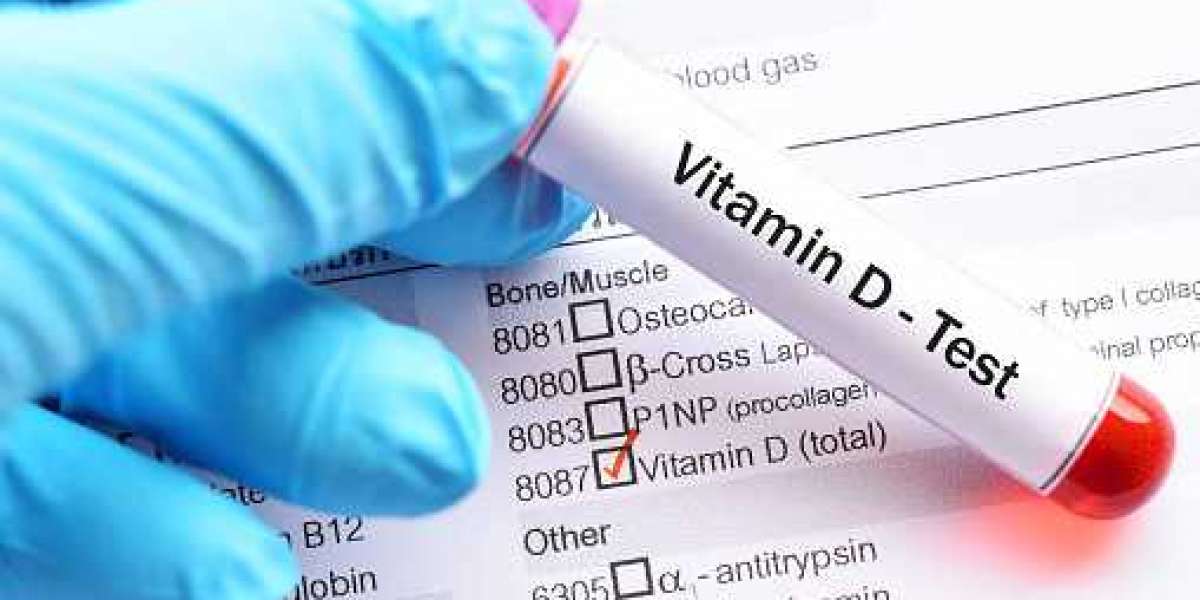Market Highlights
According to MRFR analysis, the global vitamin D testing market is expected to register a CAGR of ~6.1% during the forecast period of 2021 to 2027and is expected to reach USD ~963.6million by 2027.
Vitamin D, also referred to as calciferol, is a prohormoneor precursor of a hormone. It is a fat-soluble vitamin that is naturally present in a few foods. Vitamin D is synthesizedwhen ultraviolet rays from sunlight strike the skin.As a response to sun exposure, the human body produces vitamin D. Vitamin D intake can also be boosted through certain foods or supplements
Regional Analysis
The market has been divided, by region, into North America, Europe, Asia-Pacific, and the rest of the world.
North America is anticipated to holdthe largest market share owing to a large number of people opting fora vegan diet. An article published in April 2021 assessed the increasing number of people following veganism in the US. A survey found a 300% increase in vegans between 2004 and 2019.In addition, a report found a decrease in meat-eaters from 85% in 2019 to 71% in 2021. The rich sources of vitamin D include milk, eggs, meat, and fish.Thus, an increasing number of vegans in the region is anticipated to boost the number of people suffering from deficiency of Vitamin D. Moreover, a growing number of research studies utilizing vitamin D test kits is expected to propel the market growth in the region during the forecast period. Some of the current examples of ongoing clinical trials include understanding bone mineral density by checking levels of vitamin D at Arkansas Children’s Hospital and absorbance of nano liquid D3via 25(OH)D blood serum test at Inspired Life Medical Office, Minnesota. The vitamin D testing marketin North America is further categorizedinto the US and Canada.
The vitamin D testing market in Asia-Pacific has been segmented into Japan, China, India, South Korea, Australia, and the rest of Asia-Pacific. The growth of the vitamin D market is anticipated during the forecast period owing to an increasing populationprone to vitamin D deficiency.According to an article published in The Journal of Clinical Endocrinology Metabolism, Indian and Pakistani immigrants in southern US states develop vitamin D deficiency, rickets, and osteomalacia. Compared with Caucasians, Asians have lower serum 25-hydroxy vitamin D. Research institutes and NGOs collaborating for awareness and advancement of vitamin D status in the region are expected to increase the diagnosis rate through vitamin D testing. Organizations such as the Sackler Institute for Nutrition Science at the New York Academy of Sciences and the Bill Melinda Gates Foundationin January and March 2017 convenedin order to assess the global prevalence of vitamin D deficiency,particularly in low and middle-income countries.The vitamin D testing marketin Asia-Pacific is expected to be the fastest-growing. The vitamin D testing marketin the rest of the worldhas been divided into the Middle East, Africa, and Latin America.
Segmentation
The global vitamin D testing market has been segmented based ontype, test, application, and end user.
The market, based on type, has been divided into kits, reagents, and instruments. The reagents segment is likely to hold the largest market share in the global vitamin D testing marketdue to its higher usage frequency.
The end user segments of the vitamin D testing market are diagnostic laboratories, hospitals clinicsand home care settings.
Key Players
Some of the key players in the global vitamin D testing marketare bioMérieux SA(France), Abbott Laboratories (US), Beckman Coulter (US), Thermo Fisher Scientific (US), Mindray (China), F. Hoffmann-La Roche Ltd (Switzerland), Siemens Corporation (Germany), Quest Diagnostics, Inc. (US), DiaSorin S.p.A. (Italy), Maccura (China), Bio-Rad Laboratories (US), Tosoh Bioscience (Japan), andMerck KGgA (Germany).








